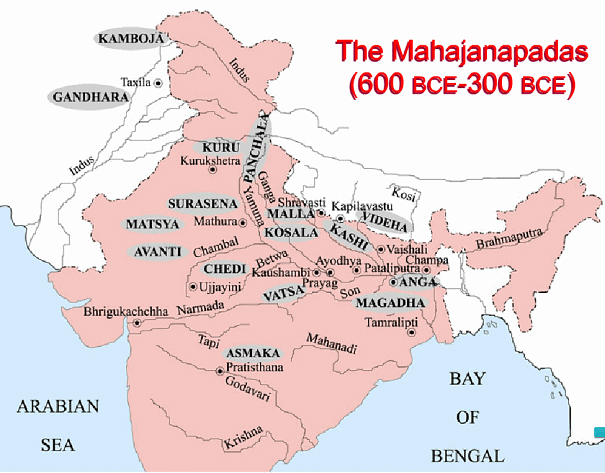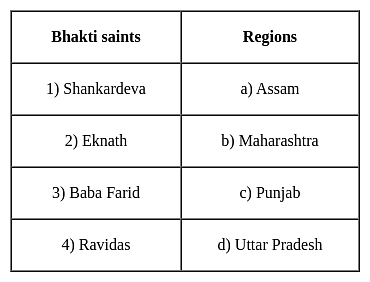MH SET Paper 2 Mock Test - 6 (History) - MAHA TET MCQ
30 Questions MCQ Test MH SET Mock Test Series 2024 - MH SET Paper 2 Mock Test - 6 (History)
Arrange the state acquired by Subsidiary Alliance in chronological order.
1. Scindia.
2. Bhonsle Raja of Berar.
3. Holkar.
4. Tanjore.
Which of the following statements is/are true?
A) Maratha leaders soon realized that Mughal power was incapable of resisting the Rajput expansion and decided to hold a conference at Hurda.
B) Hurda conference was held to discuss terms of a united Rajputana front against the Mughal.
| 1 Crore+ students have signed up on EduRev. Have you? Download the App |
Who was one of the finest calligraphers at Akbar’s court who was honoured with the title ‘Zarrin Kalam’?
What was the immediate cause of the Revolt of 1857?
With reference to the significance of the Revolt of 1857, consider the following statements:
1. It exposed the shortcomings in the Company's administration.
2. It brought India under politico-administrative unification.
3. It brought out in the open the grievances of people.
Which of the statements given above are correct?
Which among the following Brahman provides details of cultivation process?
Which one of the following is not a dance of Uttarakhand?
Which of the following categories of land are mentioned in the Chola inscriptions?
1. Pallichchhandam
2. Shalabhoga
3. Vetti
4. Kadamai
5. Vellanvagai
Atal Bihari Vajpayee was sworn in as India’s Prime Minister for how many times?
With reference to Jainism, consider the following statements:
1. Mahavira was a Kshatriya prince of the Lichchhavis
2. Mahavira taught in the Prakrit language.
3. Jainism was supported by all sections of society.
4. The basic philosophy of Jainism was written after the demise of Mahavira.
Which of the following statements given above are correct?
Mahabalipuram was a port city of which of the following dynasties?
Match List I with List II, and select the correct answer by using the codes given below the lists:
Author
I. Minaj-us-Siraj
II. Barani
III. Zia Nakshabi
IV. Alberuni
Work
a) Tutu Nama
b) Kitab-ul-Hind
c) Tarikh-i-Firoz Shahi
d) Tabaqat-i- Nasari
Codes:
Based on the passage, can it be argued that the Congress's success in achieving independence primarily rested on its
With reference to the Mauryan Art, consider the following statements.
Assertion(A):- The tradition of constructing pillars is very old and it may be observed that erection of pillars was prevalent in the Achamenian empire as well.
Reason(R):- The Mauryan pillars are very similar to the Achamenian pillars.
Pushkalavati was capital of which of the following acient Kingdoms?
Consider the following regarding Atharvaveda:
- It deals with Ayurveda and Ganithashastra.
- It was composed entirely by Aryans.
- It was highly respected by all the four varnas of society.
Which of the statements given above is/are not true?
Abdur Razzaq, was greatly impressed by the unique features of Vijayanaga's fortification.
Choose the features of Vijayanagara's fort :
(1) Eight lines of forts were constructed
(2) No mortar was used in construction
(3) The stone blocks were wedge shaped
(4) Circular bastions and pyramids were there in forts
(5) The fortification did not enclose agricultural tracts
Choose the correct answer from the options given below :
Consider the following statements:
In the reign of Jahangir, Kandahar could not be recaptured due to
1. Inefficiency of Mughal Army
2. Refusal of Khurram to proceed to that place
3. Difficulties in organising an expedition
4. Severe cold in Afghanistan
Which of these statements are correct?
Consider the following statements regarding the Social life of the Early Vedic Period:
1. The Rig Vedic society was matriarchal.
2. Women were given equal opportunities as men for their spiritual and intellectual development.
3. There was the presence of child marriage.
Which of the statements given above is/are correct?
|
60 tests
|



















